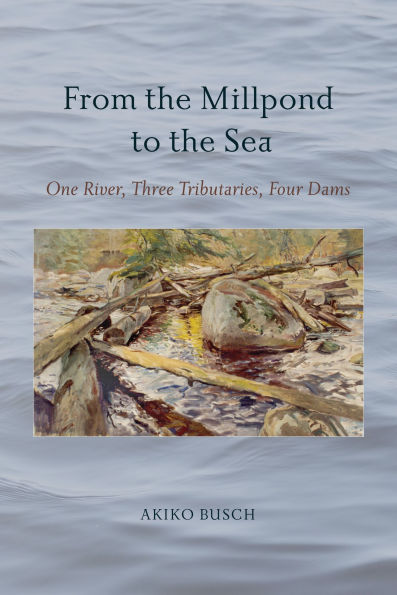A personal narrative that considers the ecological, social, and human interests around dams in New York's Hudson River Valley.
Sixty-seven tributaries flow into the Hudson River watershed, and over half are impeded by some sixteen-hundred-plus dams. Vestiges of early American infrastructure, most have outlived their purposes. Today, they restrict biodiversity; obstruct fish migration; raise the temperature of impounded water; and trap sediment, creating artificial flow patterns. Focusing on four key sites in the watershed, From the Millpond to the Sea advocates for their removal and the reconnection of free-flowing waterways and in doing so considers three options: maintenance, neglect, and removal. Along with the ecology of dam removal, the book looks to the abiding associations we have with waterways, arteries we use in our own cognitive mapmaking. Free-flowing water and still water imprint themselves differently on the human psyche, whether drawing us to meditative thought or conveying ideas about continuity and momentum. A fast-moving stream and a reflective pond speak to contrasting health of facets of human experience: motion and stillness, force and passivity. In considering how reconnecting streams answers to urgent ecological concerns, the book also reflects on the abiding associations we have with the water and land around us.
A personal narrative that considers the ecological, social, and human interests around dams in New York's Hudson River Valley.
Sixty-seven tributaries flow into the Hudson River watershed, and over half are impeded by some sixteen-hundred-plus dams. Vestiges of early American infrastructure, most have outlived their purposes. Today, they restrict biodiversity; obstruct fish migration; raise the temperature of impounded water; and trap sediment, creating artificial flow patterns. Focusing on four key sites in the watershed, From the Millpond to the Sea advocates for their removal and the reconnection of free-flowing waterways and in doing so considers three options: maintenance, neglect, and removal. Along with the ecology of dam removal, the book looks to the abiding associations we have with waterways, arteries we use in our own cognitive mapmaking. Free-flowing water and still water imprint themselves differently on the human psyche, whether drawing us to meditative thought or conveying ideas about continuity and momentum. A fast-moving stream and a reflective pond speak to contrasting health of facets of human experience: motion and stillness, force and passivity. In considering how reconnecting streams answers to urgent ecological concerns, the book also reflects on the abiding associations we have with the water and land around us.

From the Millpond to the Sea: One River, Three Tributaries, Four Dams
176
From the Millpond to the Sea: One River, Three Tributaries, Four Dams
176Related collections and offers

Product Details
| ISBN-13: | 9798855804294 |
|---|---|
| Publisher: | Excelsior Editions |
| Publication date: | 11/01/2025 |
| Series: | Excelsior Editions |
| Sold by: | Barnes & Noble |
| Format: | eBook |
| Pages: | 176 |
| Age Range: | 18 Years |
